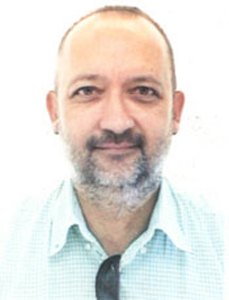Program Information
DICOM Test Case Plans for Model-Based Dose Calculations Methods in Brachytherapy
P Papagiannis1, F Ballester2*, A Carlsson Tedgren3, A Haworth4, G Ibbott5, F Mourtada6, M Rivard7, F Siebert8, R Sloboda9, R Thomson10, F Verhaegen11, T Wareing12, L Beaulieu13, (1) University of Athens, Athens, ,(2) University of Valencia, Burjassot, ,(3) Linkoping Univ, Linkoping, ,(4) Peter MacCallum Cancer Centre, Vic Australia, ,(5) UT MD Anderson Cancer Center, Houston, TX, (6) Christiana Care Hospital, Newark, DE, (7) Tufts Medical Center, Boston, MA, (8) Kiel University, Kiel, ,(9) Cross Cancer Institute, Edmonton, AB, (10) Carleton Univ, Ottawa, ON, (11) McGill Univ Health Center, Montreal, QC, (12) Transpire Inc., Gig Harbor, Wa, (13) Centre Hospitalier Univ de Quebec, Quebec, QC
SU-E-T-509 Sunday 3:00PM - 6:00PM Room: Exhibit HallPurpose: The TG-186 report provides guidance to early adopters of model-based dose calculation algorithms (MBDCAs) for brachytherapy. A charge of the AAPM-ESTRO Working Group on MBDCA is to develop well-defined test case plans, available as references for the software commissioning process to be performed by end-users. The aim of this work is to develop test case plans for a generic HDR ¹⁹²Ir source alone and in combination with a vaginal cylinder applicator with 180° tungsten-alloy shielding in a DICOM-based water phantom.
Methods: A DICOM CT dataset was created with a 30 cm diameter water sphere surrounded by air. The voxel size was 1.33x1.33x1.33 mm3 for evaluating absorbed dose rate (cGy.h⁻¹.U⁻¹). Dose distributions were obtained in the planes x=0, y=0 and z=0. Three geometries were considered with the HDR source (a) at the center of sphere, (b) displaced 12.75 cm laterally, and (c) at the center of the applicator. Monte Carlo (MC) codes (Geant4, Penelope2009, MCNP5, and EGSnrc-based BrachyDose) and Acuros were used. MC simulations were performed by multiple users to validate consistency of the DICOM reading, calculation set-up, and dose reporting.
Results: For all three geometries, MC results were generally within 2% agreement for r < 14 cm except at the sphere boundary where volume averaging occurred in voxels comprising two materials. There were no trends for r > 14 cm except that dosimetric agreement amongst the codes was limited by computational statistics. Results from Acuros and Penelope2009 were compared using a 2%/1.33 mm γ-index criteria for r < 7 cm. Voxel pass rates were 100%, 100%, and 94% for geometries (a), (b), and (c), respectively.
Conclusions: Dose rate distributions were consistent within statistical uncertainties among MC codes and for different users. Acuros reproduces MC data for the three geometries. These geometries may serve as test case plans for MBDCAs.
Funding Support, Disclosures, and Conflict of Interest: T. Wareing is employee of Transpire Inc. that developed Acuros.
Contact Email:


